
Written by Katya Rowny
Maybe it’s the way light reflects across polished metal. Maybe it’s nostalgia wrapped up in vintage chrome and patina. But photographing classic cars on film is about more than creating images—it’s about capturing history with a medium that feels just as timeless as the vehicles themselves.
Antique cars are rolling pieces of design history, and shooting them on film feels especially fitting—an analog medium for an analog subject.
Whether you’re drawn to classic muscle cars, or abandoned field finds, photographing cars on film is like bringing history back to life. The subtle imperfections, the grain, the way colors render—these qualities remind me that cars, like film, belong to eras that valued craft and patience. While there truly is no perfect formula for taking the “perfect shot” of old cars, I’ve discovered a few tricks across the years.

Finding Interesting Cars to Photograph
One of the first images I ever shot on film was my brother-in-law’s vintage 911 Porsche. I remember hanging around while he was working on the car and, in between the work, snapped an image that, years later, remains one of my favorites. Although I snapped the shot quickly, the end result was better than I expected.
Having the hood and door open with the wheel slightly turned gives the illusion of movement. That photograph taught me the power of in-situ photography–when I’m paying attention, I can find classic cars parked all over the place!
Some of my best shots have come from stumbling upon a classic parked on a side street, half-forgotten but glowing in late afternoon light. Other times, I’ve sought out events—local car shows, classic car rallies, or even weekend meet-ups at coffee shops.
These gatherings are treasure troves: cars lined up in every color and style, each with a proud owner nearby who usually loves sharing their story.
This is the best scenario for practicing different shots and asking people for portraits with their cars. Most people are delighted to indulge you in stories and pose for a photo. I also pay attention to different neighborhoods when Google re-directs my original path. Older parts of town often hide gems in driveways or alleys.
Sometimes just going grocery shopping, an old classic will be parked nearby; if you’re going to photograph old cars, keep your camera with you! And don’t underestimate the power of just keeping your eyes open—sometimes the car that becomes your favorite photograph is the one you weren’t looking for.

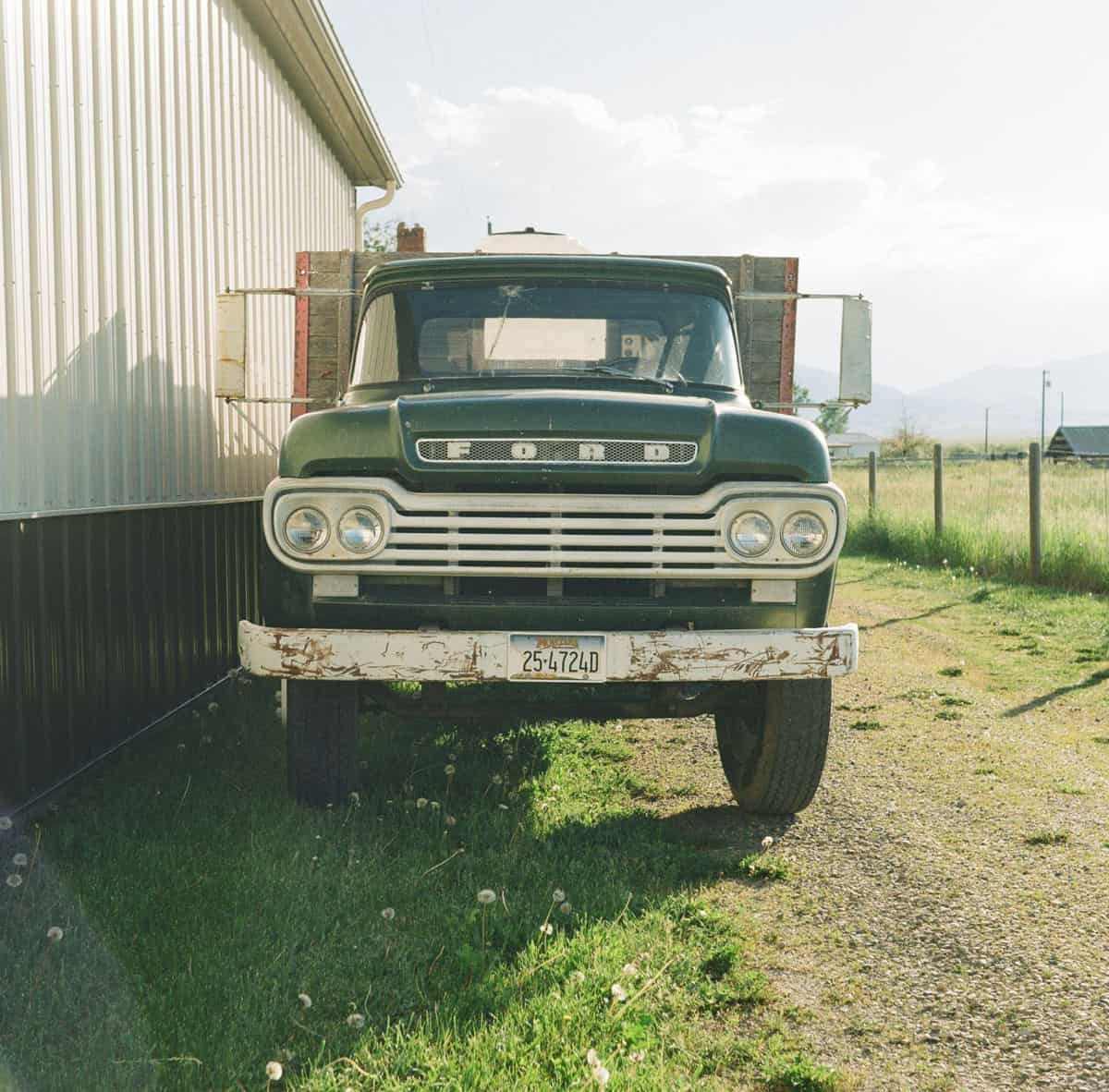

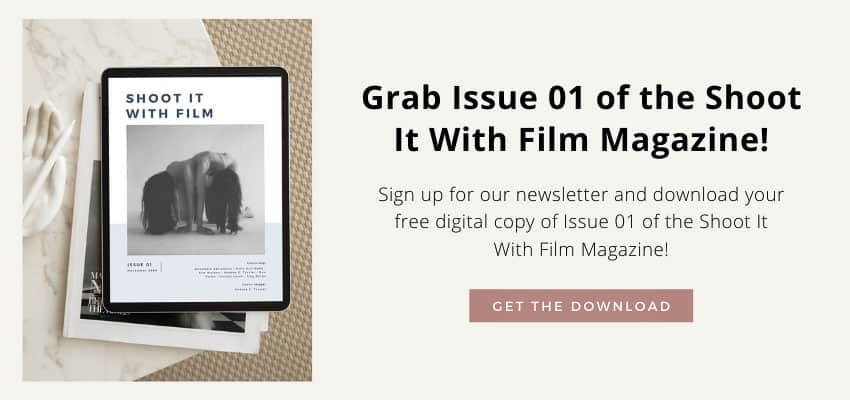
Tips for Photographing Cars & Creating Better Stories
1. Use Different Angles
Over the years, I have tried different angles and compositions to create better stories with images of cars. I usually start with a picture of the front of the car then work my way around the body and to the back. Showing both the front and side captures the proportions and curves in a flattering way.
I almost never stay at eye level. Shooting low exaggerates a car’s stance, making it look powerful and commanding. High angles can be equally dramatic, especially if you want to emphasize shape and symmetry.
2. Focus on Details
But I don’t stop there—sometimes it’s the small details that make a car unique.
Get closer– photograph emblems, taillights, reflections in chrome bumpers and wheels, or the grain of cracked leather seats. Those close-up shots tell stories that full-body shots can’t.
3. Use Context
Thinking about the context of the car and where it’s parked can add beautifully to your shot. Is the car parked in front of an old building that matches its era? Is the paint reflecting neon signs at night?
Situating the car in a scene gives it personality beyond the machine itself. Cars are sculptures on wheels, and the way you position yourself changes everything.
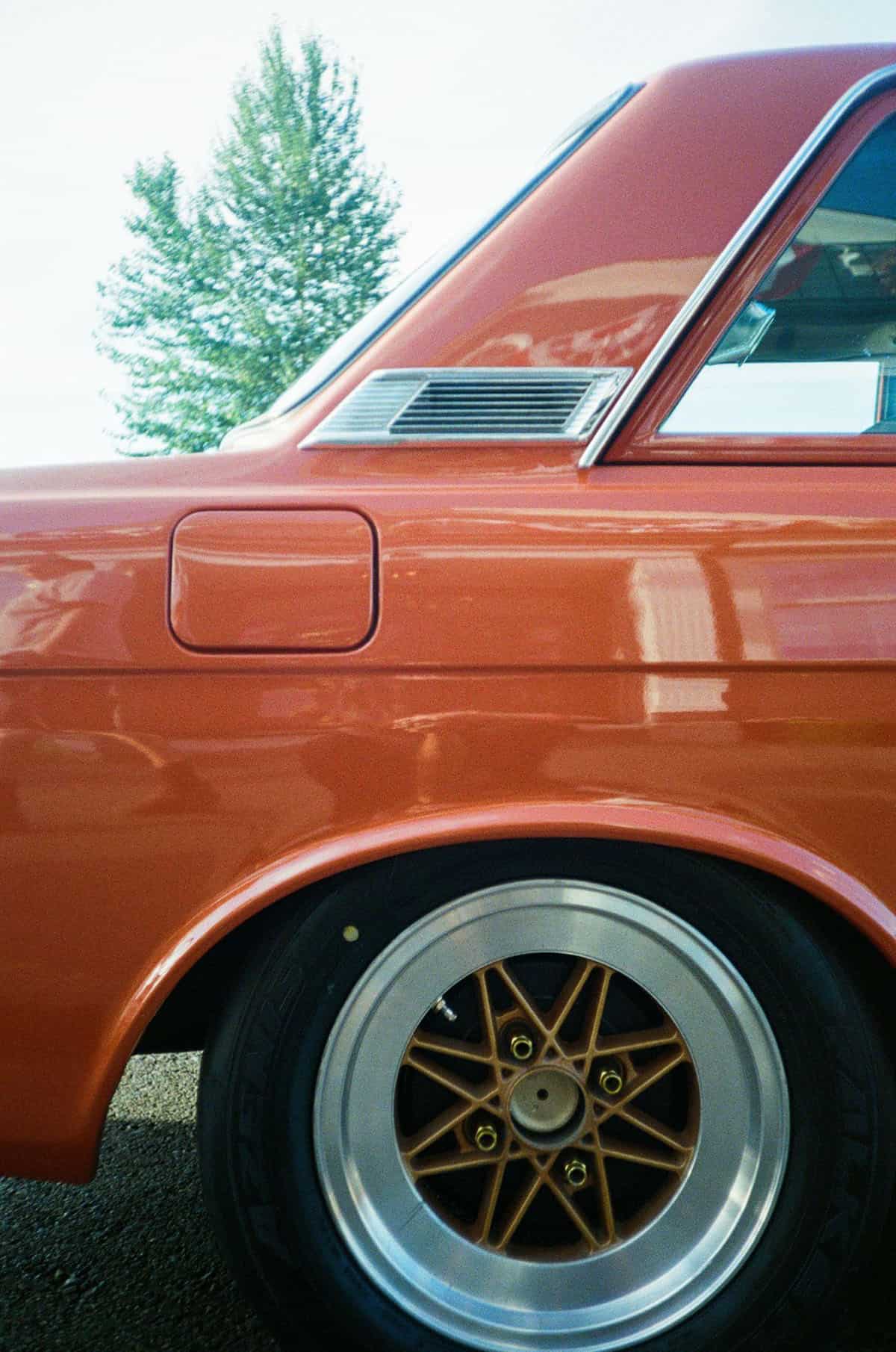
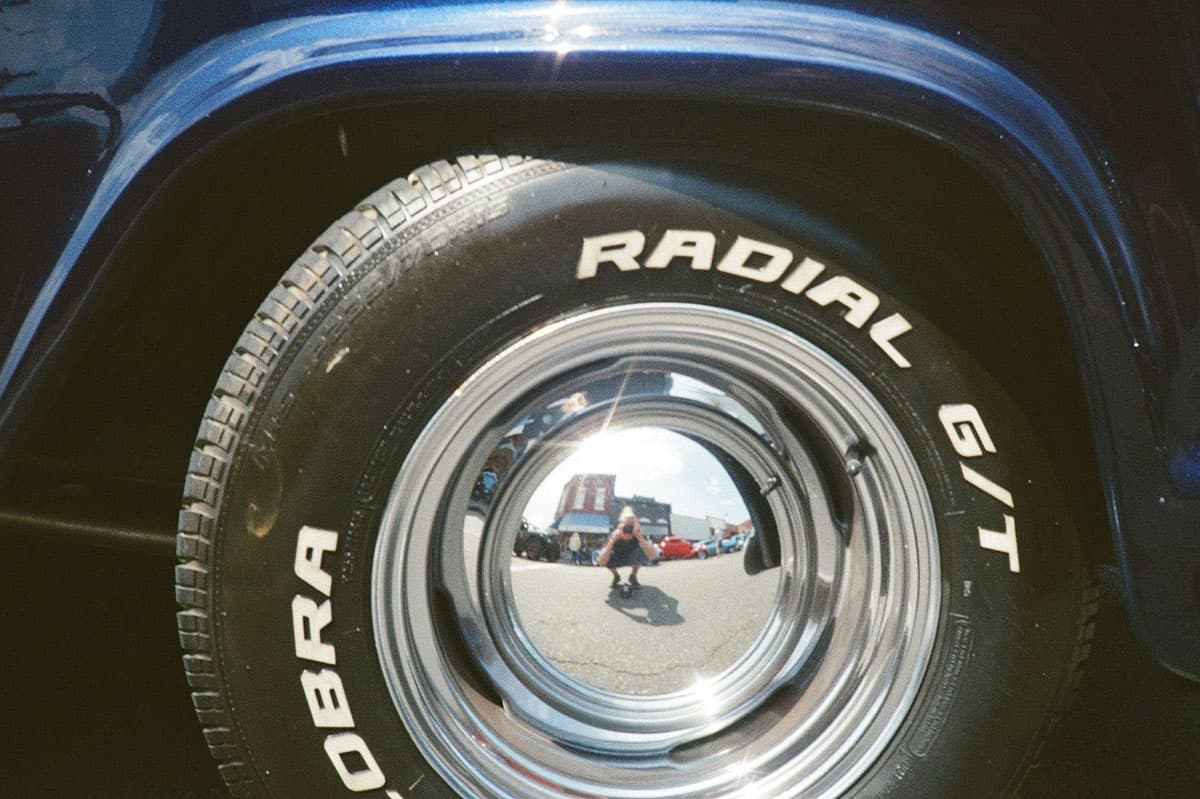
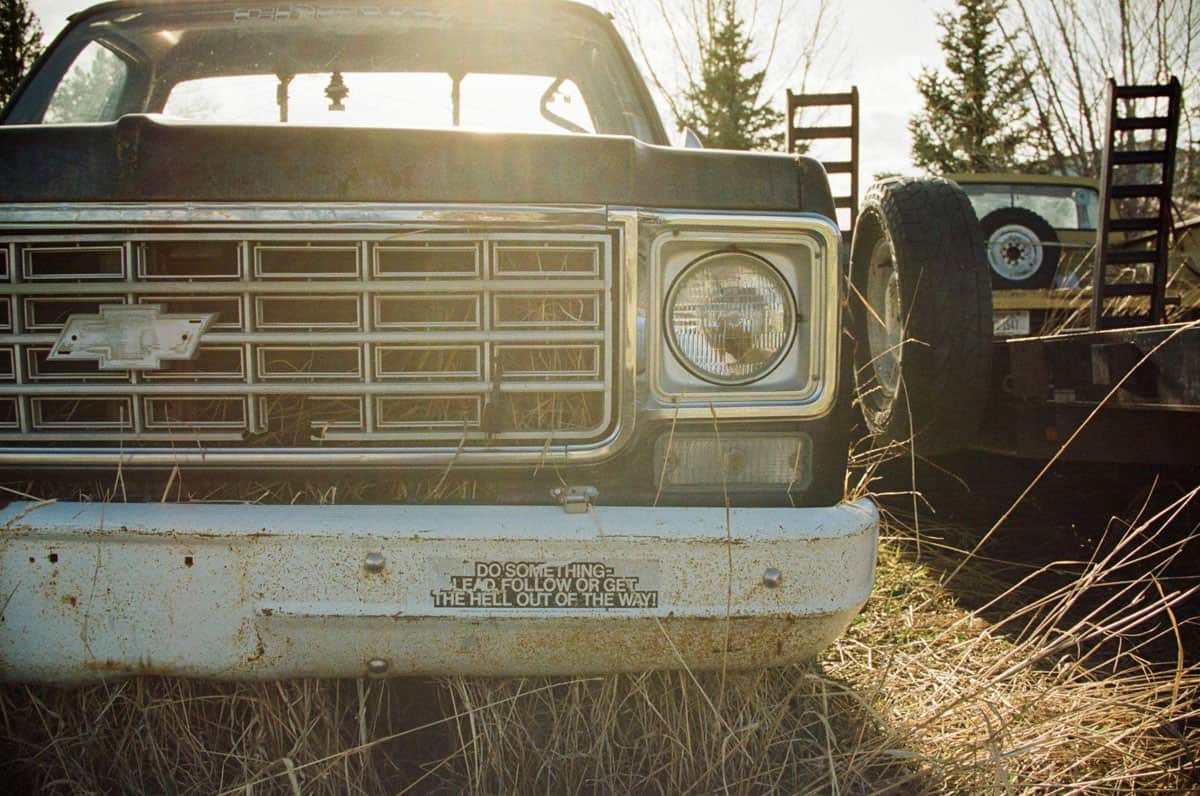

4. Remove Distractions
A striking car can be undermined by a cluttered or distracting background. Always pay attention to what’s behind your subject. Sometimes a simple repositioning or reframing is all it takes to turn a messy scene into a complementary part of the composition.
During car shows I’ve had to walk away and come back due to people being in the frame. And unfortunately sometimes people will still end up in your frame and it can’t be helped, but being aware of the whole scene can make all the difference.
Shiny paint and chrome can behave like mirrors, capturing everything around them. It’s easy to unintentionally include yourself, other people, or unwanted objects in the shot. Before pressing the shutter, take a moment to check reflections on windows, bumpers, and other polished surfaces. Adjusting your position slightly can eliminate distractions or include objects otherwise overlooked.
5. Don’t Forget the Interior!
If you can, stepping into a car’s interior is like stepping into another world. The dashboard, the gauges, the texture of upholstery—they’re tactile, intimate spaces. Shooting interiors on film can be tricky because of the contrast between bright windows and darker shadows inside.
I rely on spot metering here, often choosing to expose for mid-tones like the steering wheel or the dashboard.
Small details are gold. A vintage radio dial, the curve of a steering wheel, even the wear on a gearshift can feel iconic in a photograph. Sometimes, I’ll shoot wide to show the whole cabin, other times I’ll move in close for a detail that can be overlooked.
6. Be Considerate
At shows, I ask before shooting close-ups of interiors. Something about the inside of a car feels personal to me, and I am respectful of people’s wishes if they decline. Most antique car owners are thrilled to talk to people about their hobby and may even be open to having their portrait taken.
In that same vein, I try to be mindful of license plates when taking photos. Most of the cars I photograph don’t even run anymore, but it’s not a bad idea to blur them out of respect and consideration for people’s privacy.

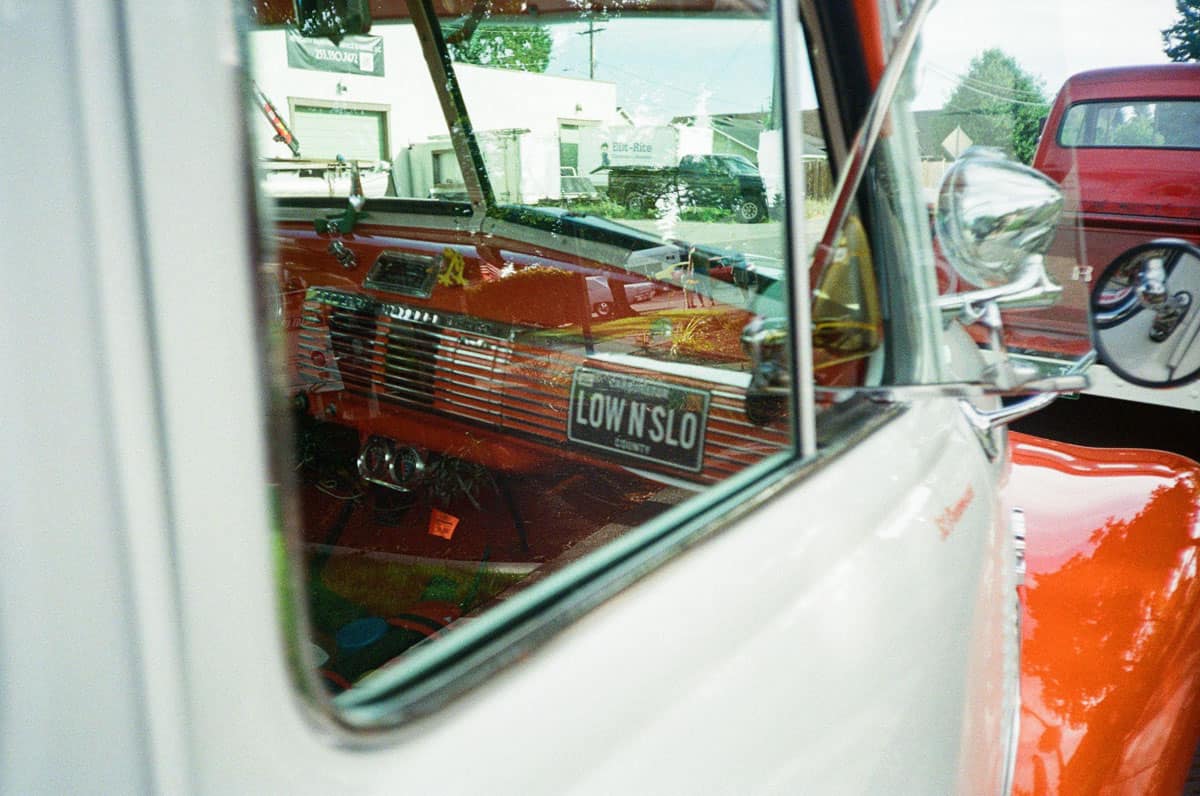

Choosing a Film Stock
When it comes to photographing cars on film, your choice of film stock can completely shape the look and feel of your images. Different emulsions bring out different qualities—some emphasize color and vibrancy, while others highlight texture, contrast, and mood.
For bold, glossy cars, Kodak Ektar is a personal favorite. Its saturation makes reds, blues, and yellows pop in a way that feels tailor-made for candy-colored paint jobs. Whether you’re shooting hot rods, muscle cars, or custom builds with flashy finishes, Ektar delivers a punchy, energetic look that matches the character of the car itself.
If you’re photographing cars alongside people, Kodak Portra is an excellent choice. Portra offers a softer, more forgiving look, with tones that feel natural and balanced. It captures pleasing skin tones without compromising the detail in a car’s finish, making it perfect for shows, meetups, or any scene where human presence matters.
Oftentimes I will photograph a car again and again with different film stocks and in different lighting conditions, changing the overall feel of the image.
When it comes to black-and-white photography, Ilford HP5 or Kodak Tri-X stand out. Without the distraction of color, these films emphasize form, shadow, and texture.
A chrome bumper rendered in Tri-X grain, for example, carries a mood and depth that color can’t replicate. Black-and-white strips the car down to its essence, highlighting sculptural lines and timeless details in a way that feels classic and evocative. Choosing the right film stock isn’t just about color or contrast—it’s about the story you want your photograph to tell. Each option brings a unique perspective, allowing you to capture cars in ways that reflect both their personality and your vision as a photographer.
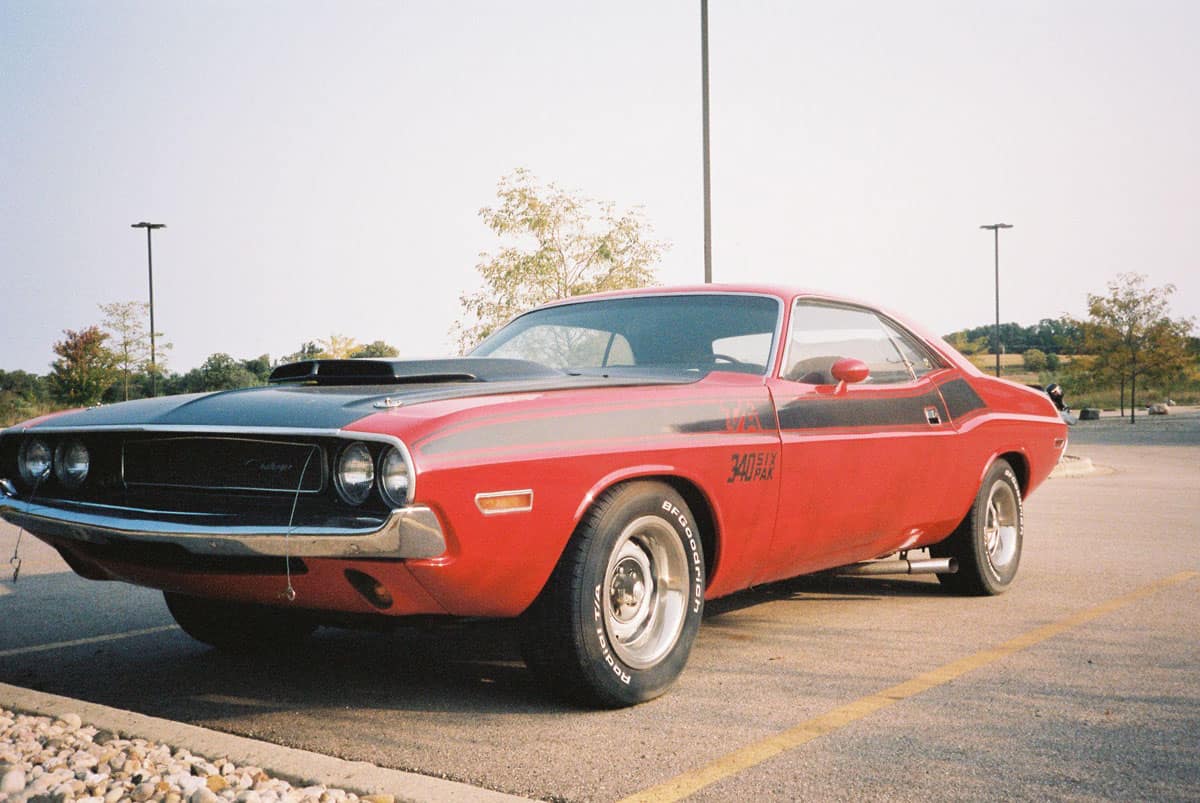
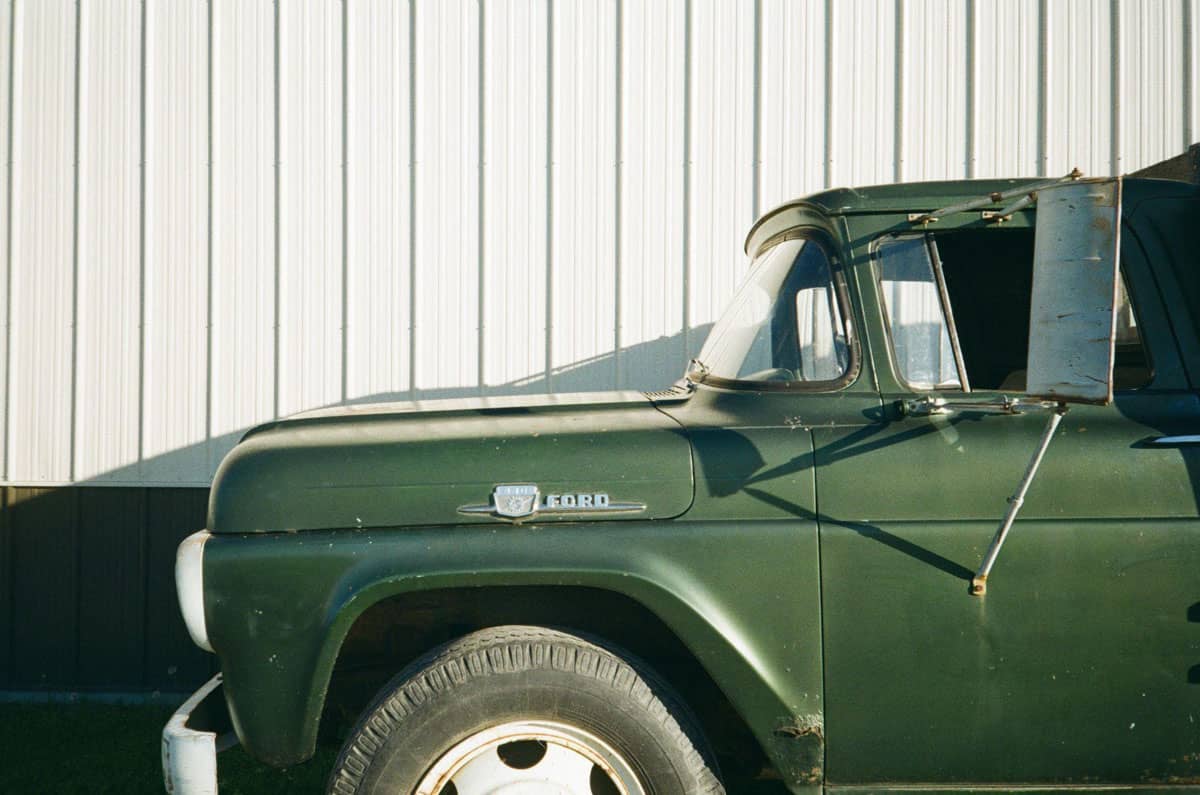
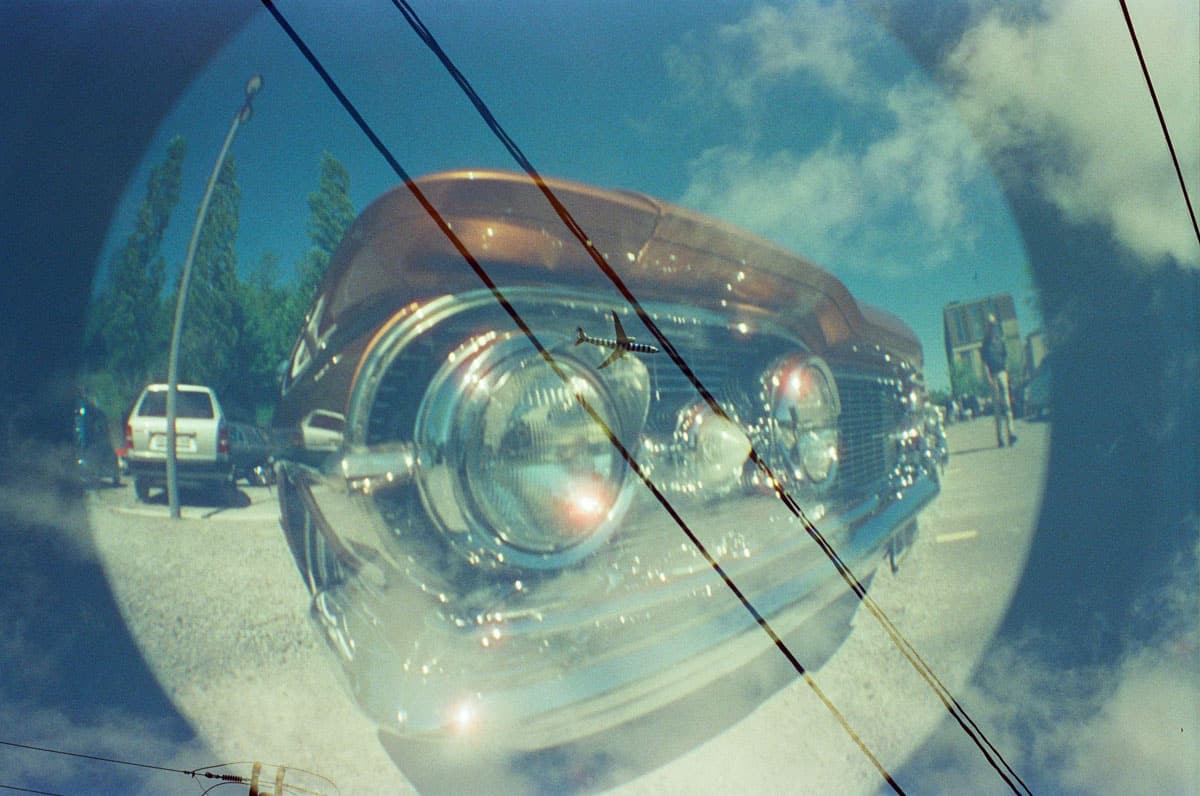
Common Mistakes to Avoid When Photographing Cars
Even seasoned photographers can fall into certain traps when shooting cars. Being mindful of these common pitfalls can significantly improve the quality of your images and help you capture vehicles in a way that feels intentional and dynamic.
One of the most frequent mistakes is shooting everything from the same height. Cars are three-dimensional and exploring different perspectives adds energy and depth to your photographs. Try kneeling, crouching, standing on a bench, or tilting your camera. Experimenting with angles can transform a straightforward shot into a visually compelling image, highlighting curves, lines, and details that might otherwise go unnoticed.
Last but not least, let’s talk about framing. Cropping off bumpers, wheels, or other essential elements can make an otherwise perfect shot feel awkward or incomplete. I can’t tell you how many times this has happened to me.
The downside to using different cameras is not knowing how the framing will render. I have unintentionally cut off parts of cars or shot angles that were awkward and unflattering.
If shooting with different cameras, I suggest using one that you feel comfortable with paired with a camera or lens that you are learning on. Unless your goal is to highlight a specific detail in an abstract way, try to include the entire car or compose your frame so that the cropped elements appear intentional and balanced within the image.
By keeping these points in mind—varying your angles, considering the background, checking reflections, and framing carefully—you can elevate your car photography. Avoiding these common mistakes helps you create images that showcase the subject thoughtfully, highlighting both design and character in every shot.
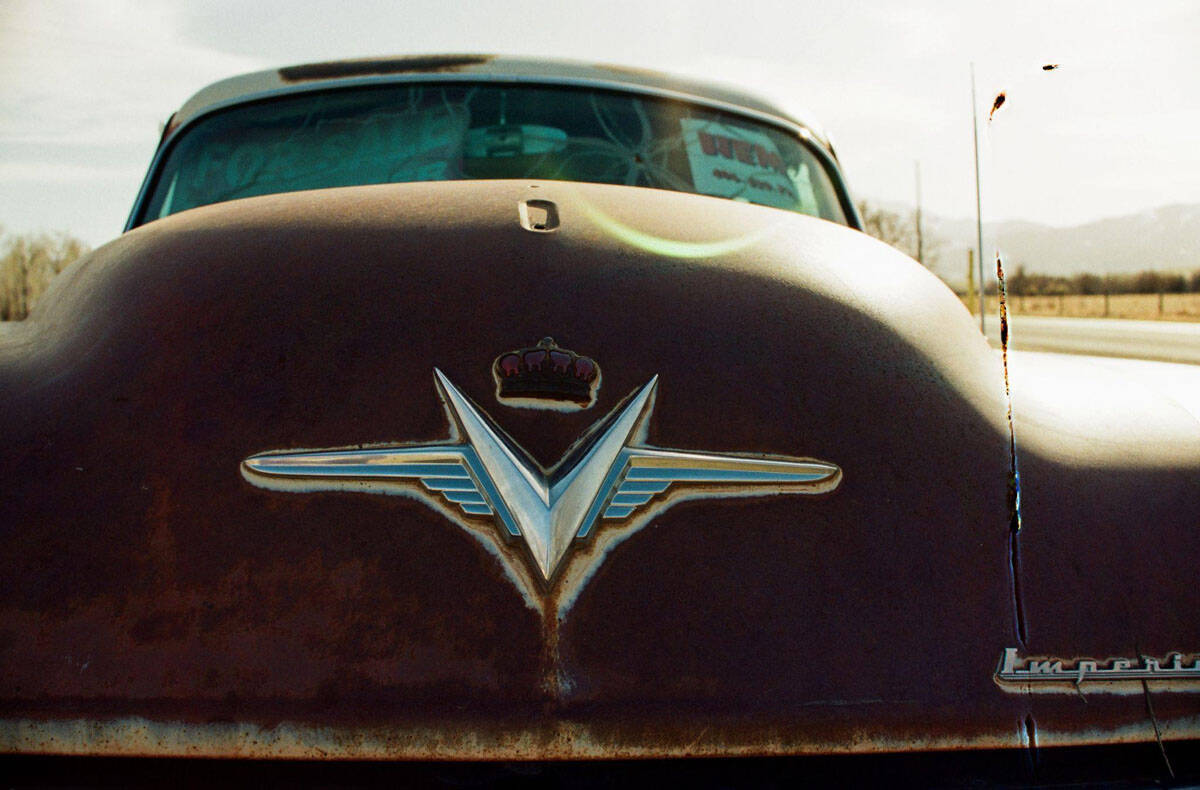
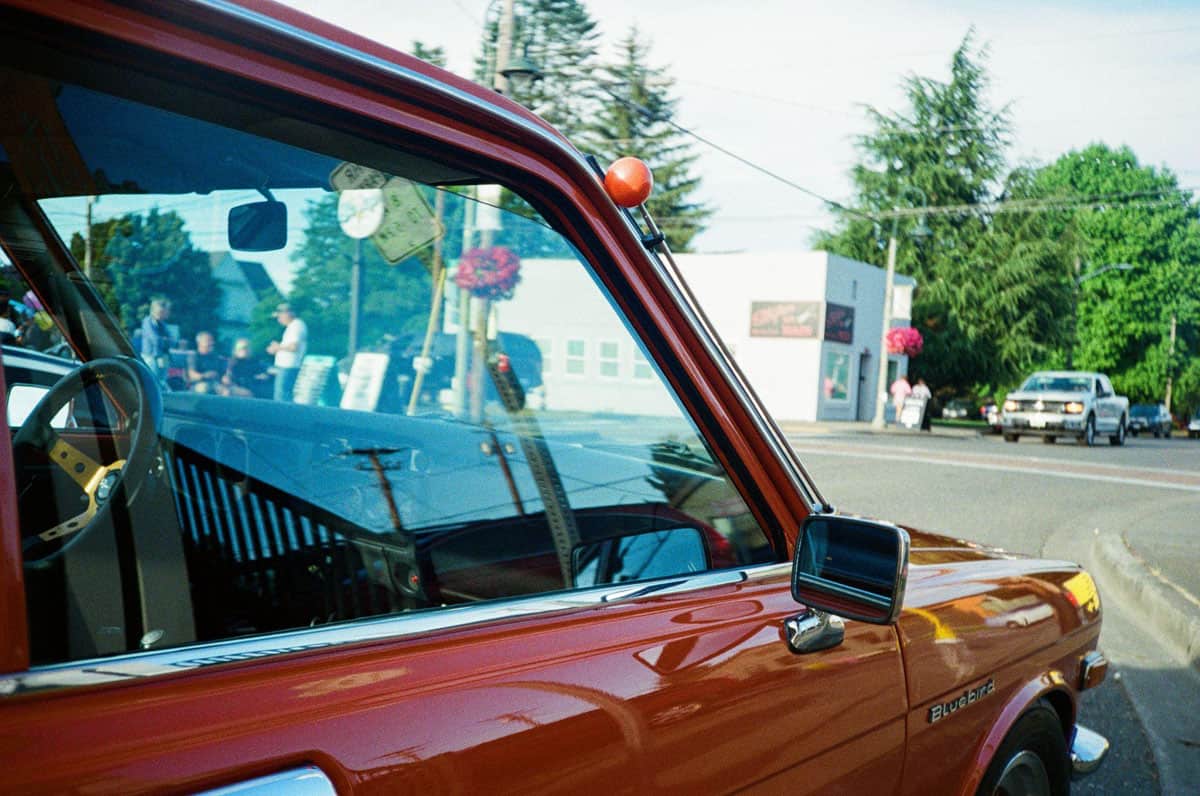
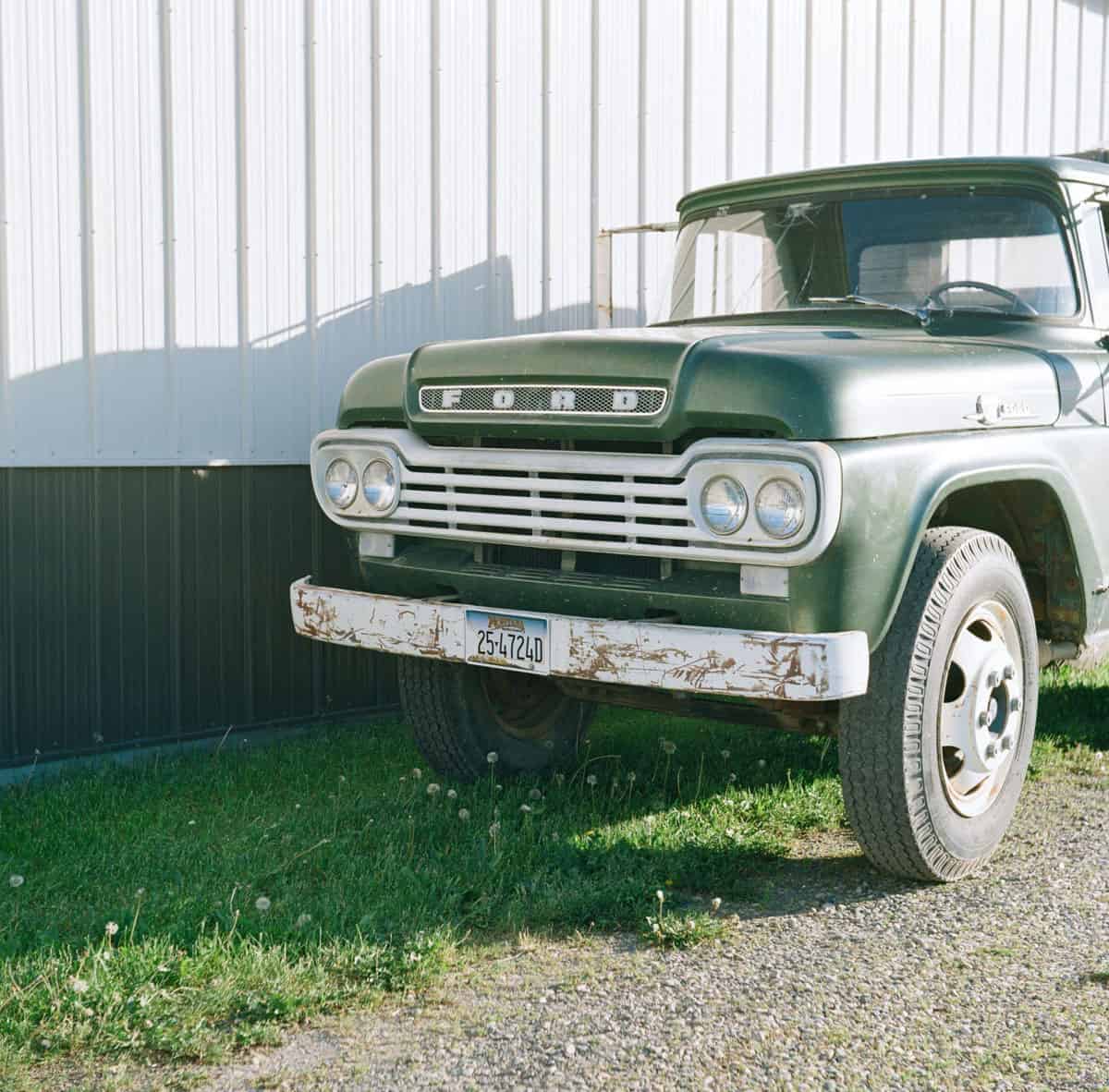
Final Thoughts
In the end, photographing classic cars on film isn’t about technical perfection, the perfect film, or precise framing. It’s about honoring history, slowing down, and capturing character.
What keeps me photographing cars on film is the mix of unpredictability and beauty. No two cars photograph the same way, and no two rolls of film render them exactly alike. Sometimes the imperfections—the grain, the light leaks, the quirks of film— echo the quirks of the cars, making each frame a story worth sharing.
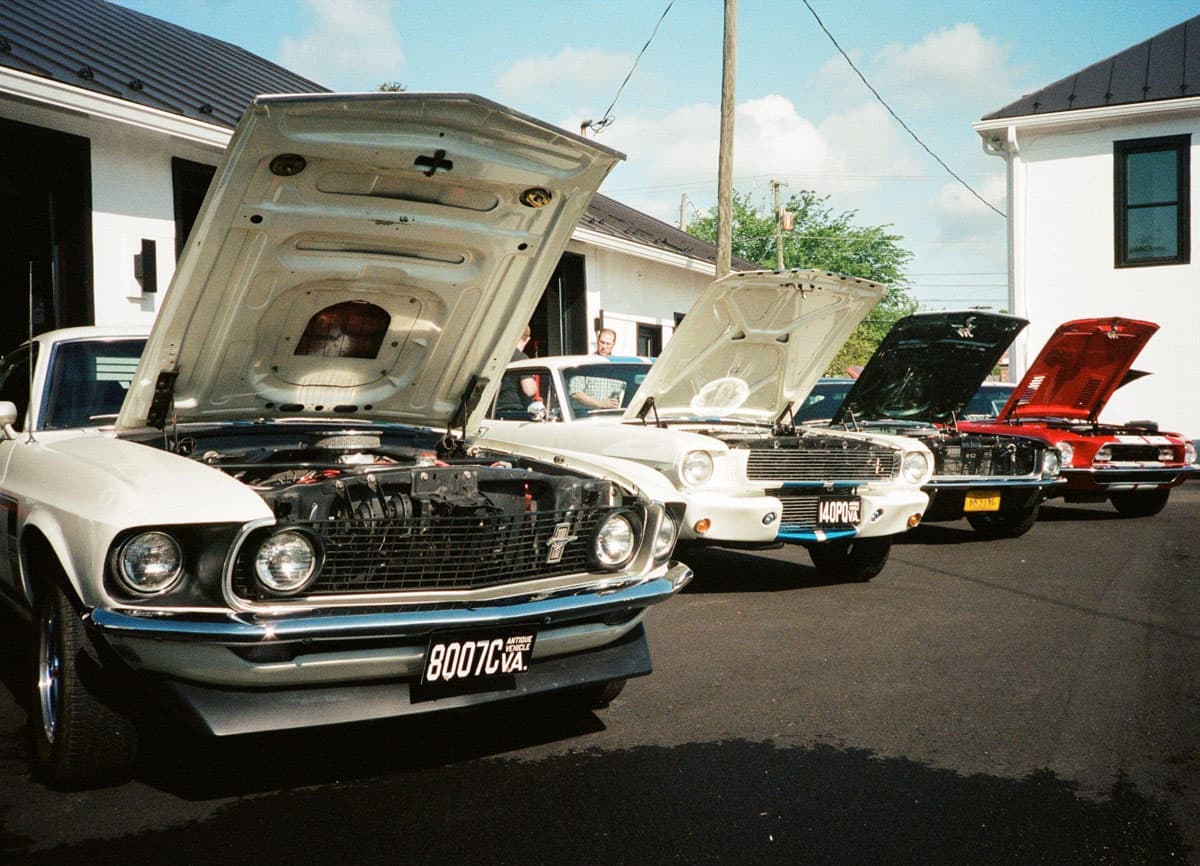
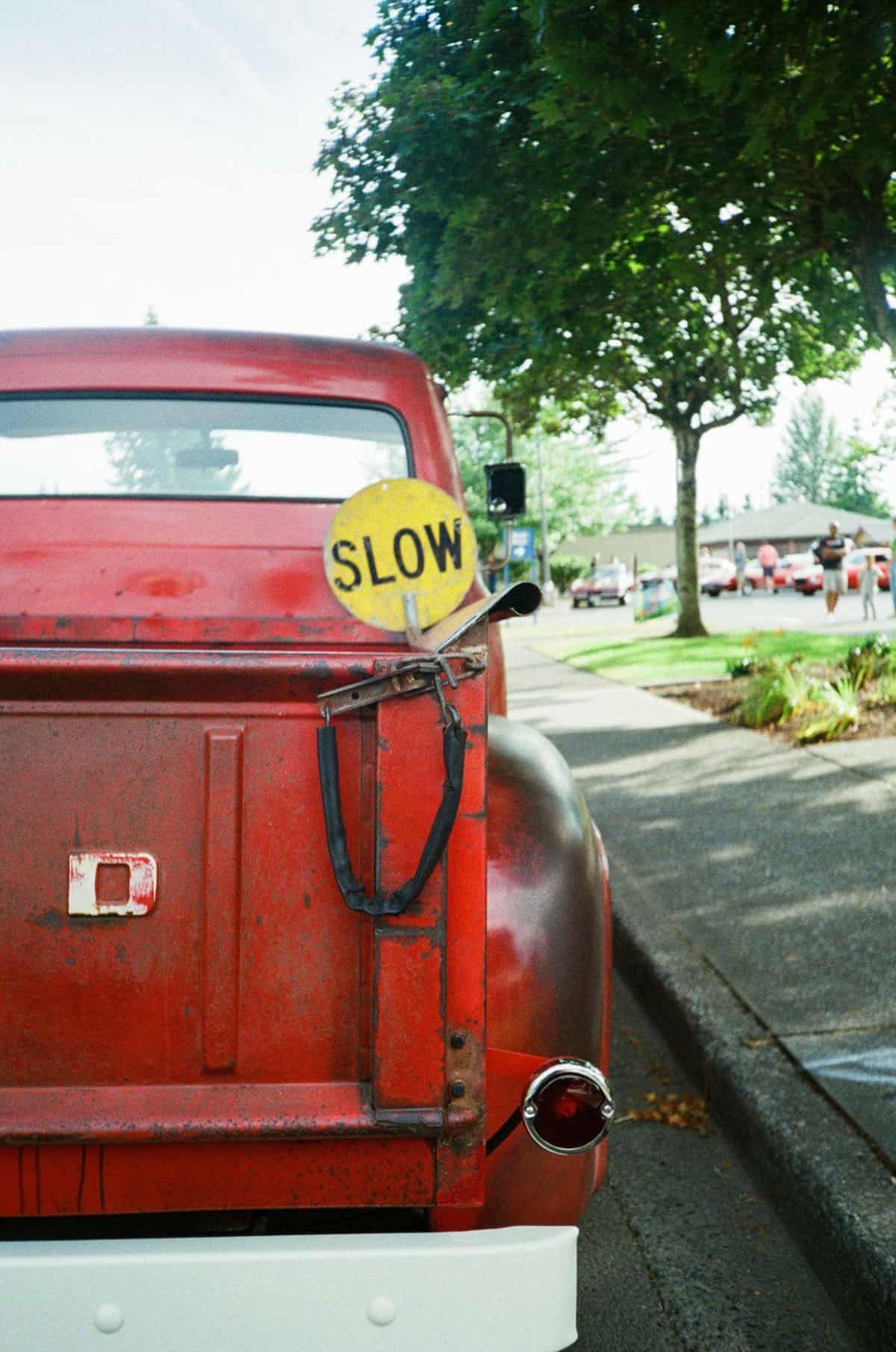

Thank you so much, Katya! Katya is a regular contributor for Shoot It With Film, and you can check out her other articles here, such as The Top 3 Film Labs I Trust With My Work (And Why I Keep Going Back) and Ilford Sporti Vintage Medium Format Film Camera Review.
You can also find more of Katya’s work on her website and Instagram.
Leave your questions about photographing cars on film below in the comments!
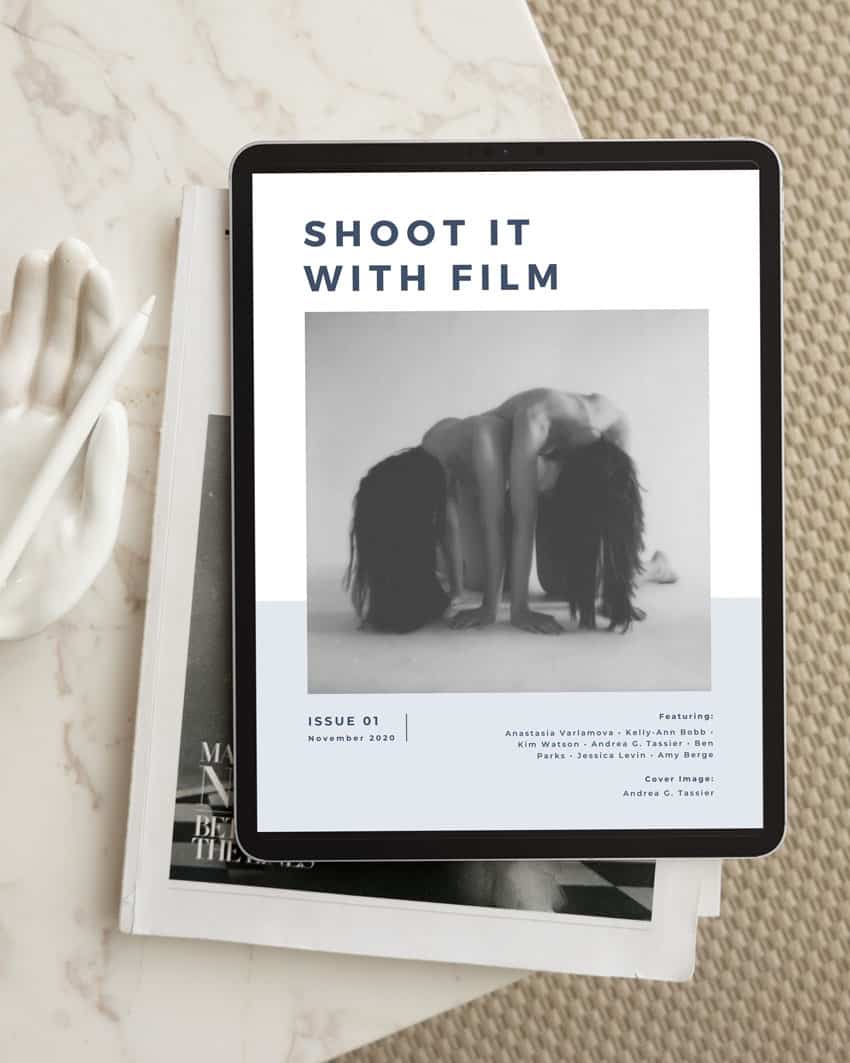

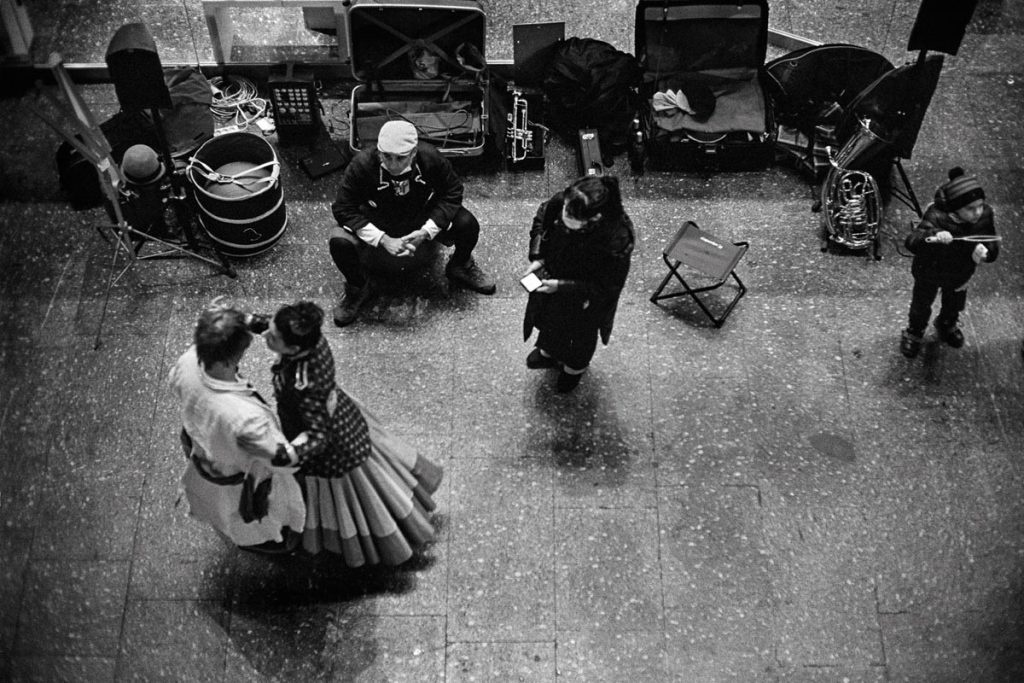
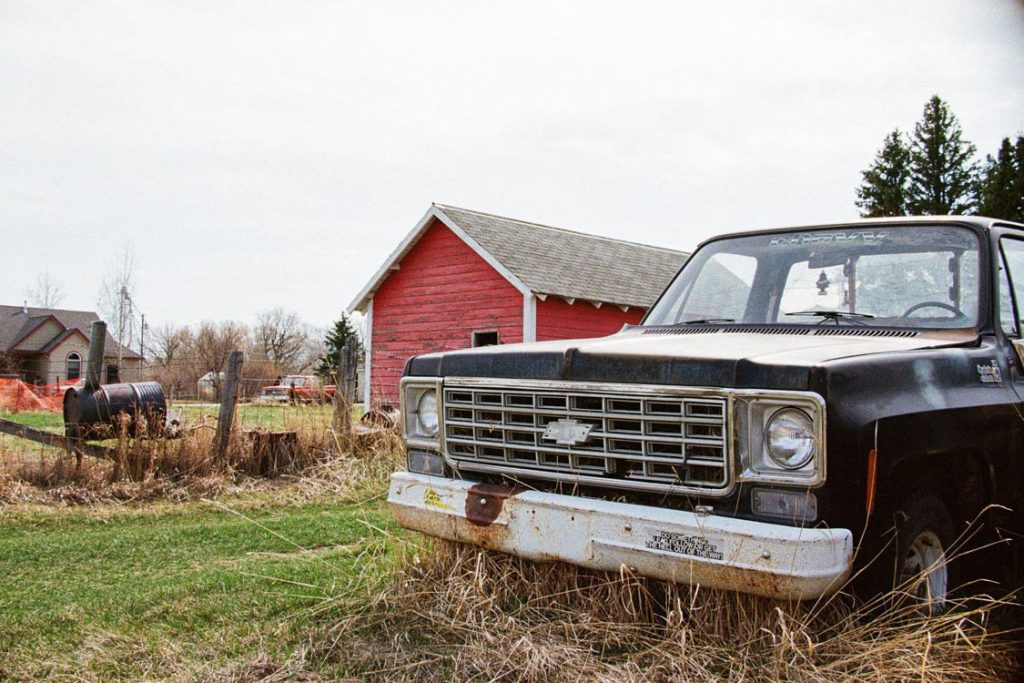




Blog Comments
Gary
October 4, 2025 at 9:36 am
Hi Katya,
I saw the link for your article in the recent Shoot it with Film email. As someone who has been shooting cars since the 1980’s (both on film and digital) I had to check your article out mostly out of curiosity.
I just want to say how well written this is, and there is a lot of great advice for those starting out with shooting cars. Most of your tips I have been doing myself for years. I just wanted to add two things…
Film suggestions – I find CineStill 50D and Kodak Pro Image both very nice film stocks in addition to the ones you mentioned. They have softer colors, almost pastel, and really fit the era of older cars.
The other is a fun thing for when you do digital scans of your film images. While personally I don’t edit film scans (I do enough editing with digital – lol) I have done one thing that some of my clients have loved on the classic car photos. I’ll open up the image in Photoshop, and add a white border on all four sides, then make the bottom border much wider. It gives it a fun polaroid look, which just seems to work well with classic cars.
I enjoy your articles, and am looking forward to your next one!
Katya
October 6, 2025 at 8:40 pm
Hi Gary! Thanks so much for checking out the article and adding your tips. I love the idea of the Polaroid look by adding borders in Photoshop! May have to try that one myself. I haven’t shot any Cinestill myself but definitely will in the future when the sun returns in the PNW : )
Thanks again for reading and commenting!
Wilfried
October 4, 2025 at 5:39 pm
Very well written! I also enjoy shooting on film and shooting cars. I usually have two cameras with me when I go out for shooting, primarily to have multiple films at hand. Mostly one loaded with color film and the other b/w.
I like the Porta a lot for colorful cars, but also more experimental film are interesting as each film adds its own character to the photo.
Travis
October 5, 2025 at 6:24 pm
Thanks for this! Old cars are my very favorite subject, and I agree that film fits the aesthetic perfectly.
I can’t resist mentioning something about the license blurring. I’ve certainly seen others blur license plates before*, but I always chuckle at it, since there’s no realistic privacy risk from knowing someone’s license plate number. It’s incredibly difficult for the average person to obtain identifying information from a license plate, unless they happen to be in law enforcement, certain roles in insurance, or the few other specific professions granted access to those state databases. Which does make sense–after all, they’re right out there in the open for everybody to see at all for, lol. (Plus a blurred plate really diminishes the picture quality imho, unless it’s photoshopped out entirely.)
*The place where I see them obscured most is definitely on Facebook marketplace, which I find absolutely hilarious considering it’s Facebook and their identifying information is already right in front of you.
Thanks again for the tips!
Katya
October 6, 2025 at 8:44 pm
Hi Wilfried!
Thanks so much for reading and commenting. I love the idea of having two different films stocks, esp b&w! Definitely goes with the classic car vibes. I haven’t shot much b&w myself but might have to in the future : )
Katya
October 6, 2025 at 8:47 pm
Hi Travis!
Thanks so much for reading and commenting! To be honest I don’t try very hard to blur out licence plates but I do try to be respectful when photographing other peoples property. Most people don’t mind but I’ve had a few people ask me to not publish the photos of their cars. To each their own, I guess : )
Thanks again.